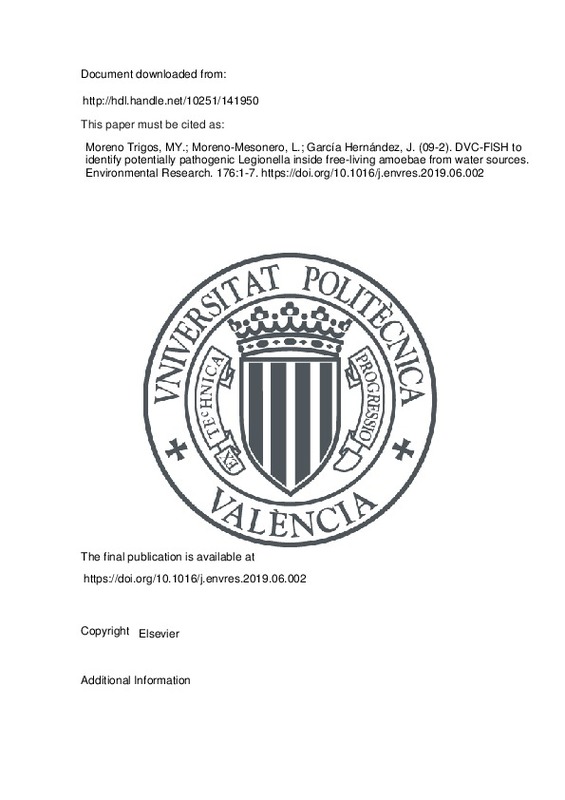JavaScript is disabled for your browser. Some features of this site may not work without it.
Buscar en RiuNet
Listar
Mi cuenta
Estadísticas
Ayuda RiuNet
Admin. UPV
DVC-FISH to identify potentially pathogenic Legionella inside free-living amoebae from water sources
Mostrar el registro completo del ítem
Moreno Trigos, MY.; Moreno-Mesonero, L.; García Hernández, J. (2019). DVC-FISH to identify potentially pathogenic Legionella inside free-living amoebae from water sources. Environmental Research. 176:1-7. https://doi.org/10.1016/j.envres.2019.06.002
Por favor, use este identificador para citar o enlazar este ítem: http://hdl.handle.net/10251/141950
Ficheros en el ítem
Metadatos del ítem
| Título: | DVC-FISH to identify potentially pathogenic Legionella inside free-living amoebae from water sources | |
| Autor: | ||
| Entidad UPV: |
|
|
| Fecha difusión: |
|
|
| Resumen: |
[EN] Despite all safety efforts, drinking and wastewater can still be contaminated by Legionella and free-living amoebae (FLA) since these microorganisms are capable of resisting disinfection treatments. An amoebae cyst ...[+]
|
|
| Palabras clave: |
|
|
| Derechos de uso: | Reserva de todos los derechos | |
| Fuente: |
|
|
| DOI: |
|
|
| Editorial: |
|
|
| Versión del editor: | https://doi.org/10.1016/j.envres.2019.06.002 | |
| Código del Proyecto: |
|
|
| Agradecimientos: |
|
|
| Tipo: |
|







![[Cerrado]](/themes/UPV/images/candado.png)


